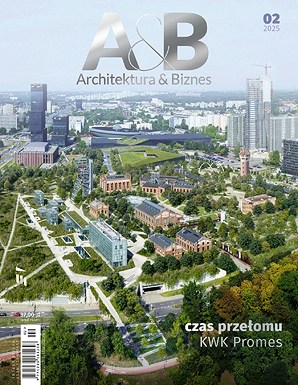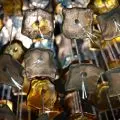Houses made of precast concrete are distinguished by their high strength and resistance to damage. Concrete is a durable material that is not susceptible to weathering. Prefabricated concrete structures are also characterized by good thermal insulation, which makes them energy-efficient and have good thermal comfort in both winter and summer. Other advantages include short construction time, low price and no need for renovations.
What are precast concrete elements?
A precast concrete component is a finished building component manufactured in accordance with the specifications of the project. This ensures that its characteristics are exactly as planned, minimizing the need for additional processing during installation at the construction site.
Prefabricated elements are joined together to form larger structures. They are used in the construction of a wide range of structures, including single-family homes, sports arenas, shopping centers, apartment complexes or outbuildings. These are just some of the potential uses of prefabricated elements. Because of their design flexibility, they meet a wide range of individual requirements, making their use very broad.
What are the types of precast concrete elements?
The use of precast concrete elements is extremely extensive
Photo: iStock © Author's archive
Precast elements are a key component of modern construction. They are divided into:
Ceilings
-
Panel - these are concrete slabs with a uniform structure used as prefabricated ceiling elements.
-
Panelized - these are larger concrete slabs that are assembled on site.
-
Dense ribbed - are characterized by numerous ribs running across the slab, which increases their strength with less weight.
Stairs
-
Straight - uniform stairs made of concrete that lead in one direction.
-
Intercalated - can change direction.
-
Balconies - prefabricated balconies made of concrete, which are mounted to the building with special fasteners that provide thermal insulation and avoid thermal bridges.
Walls
-
Solid - concrete walls without insulating layers.
-
Layered - consist of several layers, including the insulating one, which increases energy efficiency.
-
Prefabricated houses - entire house structures that are manufactured in a factory and then assembled on site.
Chimney systems - prefabricated chimney segments that are assembled on the construction site.
Pre-stressed concrete lintels - used over door and window openings, manufactured from concrete reinforced with strings.
Blanks
-
Formwork - hollow blocks that act as formwork when concrete is poured.
-
Expanded clay blocks - lightweight blocks made of expanded clay. They have good insulating properties.
-
Alphablocks - are characterized by a specific shape that allows easier masonry.
-
Structural blocks - used mainly for the construction of load-bearing walls.
-
Concrete blocks - massive concrete blocks.
How is the installation of precast concrete elements?
Precast elements speed up the construction process and guarantee the solidity of the building. However, it is important that they are properly assembled. To achieve this, specialized equipment and experience in their installation are required.
Photo: iStock © author's archive
Walls in prefabricated concrete houses are manufactured in specialized plants. They are formed from a combination of concrete and reinforcing elements, such as steel rods or fiberglass mesh. This type of production is called prefabrication. Once the concrete has bonded and cooled, the finished walls are delivered directly to the construction site, where they are assembled. The process of assembling such walls is generally more time-efficient compared to pouring concrete in the traditional way. After the wall is erected, it is usually covered with an additional layer, such as plaster or another facade.
What are the advantages of precast concrete?
The prefabrication method is gaining popularity in the construction industry due to the streamlining of project implementation and the guarantee of precision and quality of the finished elements. The advantages of using precast concrete are:
- Efficiency and ease of installation - thanks to prefabricated concrete elements, installation on site is instant. This shortens the project time, reduces delays and brings financial benefits.
- Guaranteed quality - manufactured in a controlled environment, precast concrete elements are distinguished by their excellent quality. Resistance to external factors makes them more durable. In addition, the wide range available on the market allows you to choose from a variety of designs, colors and forms, which expands your options
- Precise workmanship - prefabricated concrete makes it possible to achieve a perfect result. This means that the structural elements fit together perfectly, which is essential for more advanced projects.
- Efficiency in the use of raw materials - fewer materials are wasted in the production of precast concrete than in traditional methods. Thanks to factory production, it is possible to precisely dose ingredients and minimize waste.
What are the disadvantages of precast concrete?
There is no denying that the main advantage of prefabricated houses is the lightning-fast construction time. These structures are able to be built in a surprisingly short time, which significantly shortens the wait for a new home
Photo: iStock © author's archive
Although prefabrication is eagerly chosen by many builders due to its numerous advantages, some drawbacks of this method cannot be overlooked.
-
Lack of flexibility at the implementation stage - once prefabricated concrete is produced, it is difficult, and often impossible, to modify it. Possible design errors may require additional cost and time, delaying the entire project.
-
Requiring accuracy during assembly - errors during the assembly of precast concrete can lead to serious complications, such as misalignment or stability problems. This requires precise coordination and experienced assembly teams.
-
Transportation problem - transporting large and heavy prefabricated elements can be complicated and expensive. It requires specialized means of transportation, proper roads and planning to ensure safe and efficient transportation to the destination.
Choosing precast concrete is a decision that can bring many benefits. However, it requires careful analysis, planning and proper implementation.
Are you building a house? Check out our tips on precast
Compiled by:MAŁGORZATA BUCHKOVSKA




















